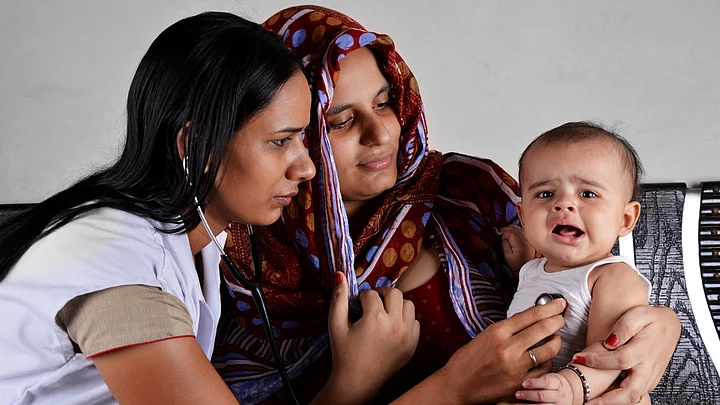Fight against the Health Menace
- Health continues to pose a major challenge for India with a sudden outbreak of certain diseases
- Health Ministry’s new initiative aims to draw parallels between diseases, their cause in India and other parts of the world
- A team of 100 experts roped in to track health-related patterns
- An immediate benefit for India would be to fight against vector-borne diseases such as Japanese encephalitis
- Reports at the state-level will enhance level of understanding in terms of deployment of resources
In recent times, India has witnessed an outbreak of a host of diseases, including a spike in cancer cases and other debilitating ailments across some states. This sudden challenge could be attributed to suspected water or air contamination, prevalence of high rates of mental ailments or depression. Besides, there has been high incidence of deaths due to road accidents in different parts of India.
In a move which is perhaps one of its kind, all such events would now be mapped to draw parallels with similar instances in other parts of the world with a motive to find solutions to these health-related problems.
As a part of the exercise a team of 100 experts, including a large number of practicing doctors, have been roped in to track and map various developments related to health. These experts will also analyse the risk factors for generating an estimate of state-level disease burden and other factors needed to improve the health programmes and planning in India.
Advantages of the Sub-National Study
Speaking to The Quint, William Heisel, Director of Global Engagement at Institute for Health Metrics and Evaluation, University of Washington, whose institute is part of the initiative launched by the Indian Council of Medical Research (ICMR) and the Public Health Foundation of India (PHFI) in collaboration with the Ministry of Health and Family Welfare, said the sub-national study would help in making “meaningful comparisons between the prevalence of a disease in a state or a region of India with any other region in the world.”
“India is many countries within a country and this masks the impact of any disease. The mapping of a disease or risk factor would immediately enable us to see its spread, impact and control in any other part of the world, where it may have spread earlier. It would help us relate and ask, whether this State is more like some other country or a region of another country. This helps reduce the response time and tackle the disease or the risk factors more effectively,” said Heisel, who represents a global research institute that provides independent, rigorous, and comparable measurement of the world’s most important health problems and evaluates the strategies used to address them.
“So if a large number of people are getting injured or dying in road accidents in India, then probably we can look at the Australian model where there has been a drastic reduction in such deaths due to certain steps. Likewise, the spread of Ebola in Africa has shown how strongly and quickly the world needs to respond to spread of disease”
— William Heisel, Director, Global Engagement at Institute for Health Metrics and Evaluation, University of Washington
Thus, an immediate benefit from the programme could accrue to the fight against Japanese encephalitis which has claimed thousands of lives in the past decade in eastern Uttar Pradesh, Bihar, West Bengal and parts of Assam. The disease spread by vector-borne virus is also prevalent across eastern Asia but has been well-controlled by China, Japan, Korea, Taiwan and Thailand.
Finding Solutions
Heisel said by eliminating polio, India has shown its ability and will to combat disease. “It now needs to tackle the high prevalence of heart attacks and strokes. Similarly, H1N1 or swine flu is another area where the country stands to gain and we are sure most of the tropical diseases can be controlled well.”
When the programme was first launched in Switzerland and the United States in 1990, Heisel said one of the surprise areas where it helped was in dealing with mental and behavioural disorders. “Now the programme covers 188 countries and our endeavour would be to come up with a sub-national report on India in 2016 to help co-relate disease here and find solutions.”
The state-level reports, he said, would also help the country deploy its resources more efficiently. “The participation of ICMR has also provided with a whole new level of depth.”
Different Strategies for Different States
The Global Burden of Disease study would help India deal with the burden of premature death and health loss due to non-infectious conditions such as heart disease, stroke, diabetes, chronic obstructive lung disease, road traffic, lower respiratory infections, tuberculosis, diarrhoea and neonatal disorders. It would help policy makers understand the trends of disease and risk factor in order to plan further action.
On how the project would help, Soumya Swaminathan, Director-General of ICMR and Secretary, Health Research, at the Centre, said: “There is substantial variation across India in disease burden trends which needs to be systematically understood at sub-national levels. The need of the hour is to have a robust scientific approach to identify and estimate the significant contributors to ill-health across each state in order to plan a response specific to the local situation”
Stating that air pollution and tobacco smoking continue to be major contributors to health loss, PHFI President Professor K Srinath Reddy said: “The efforts of the state-level Disease Burden Initiative would help refine the understanding of these variations across India, which would inform appropriate strategies for the different states of India.”
(The writer is a Delhi-based freelance journalist)
